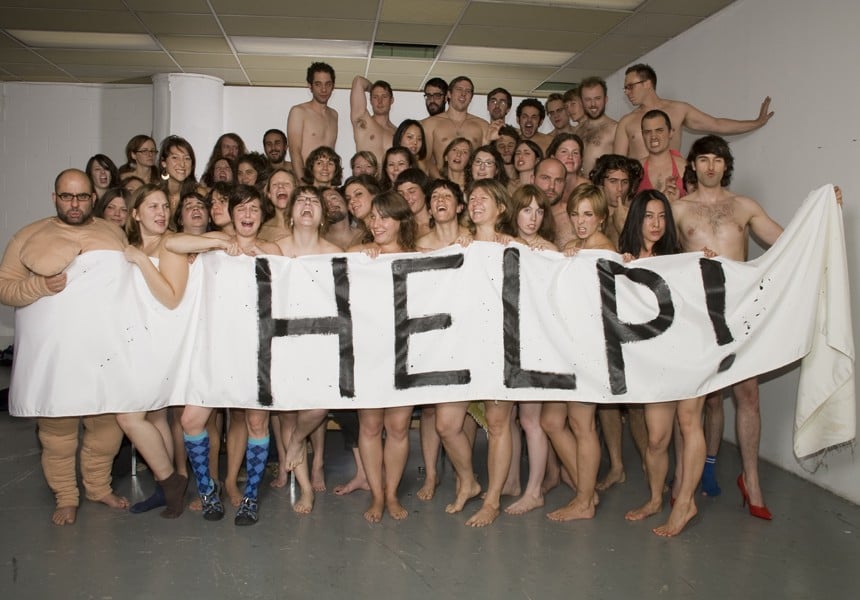Art World
10 Art World Survival Tips They Didn’t Teach You in School
Students and recent grads share their advice.

Image: http://www.artandeducation.net.
Students and recent grads share their advice.

Lauren Palmer

So you want to get a Master of Fine Arts. But how well will your MFA program prepare you for life as a professional artist?
The number of graduates from art MFA programs has doubled from 1987 to 2012, while BFA graduates have nearly tripled during the same time frame. In The Atlantic last year, Bourree Lam wrote about the difficulty the majority of MFA graduates face finding solid returns on their investment, with high tuition costs and limited job prospects.
The situation at USC’s Roski School of Art and Design earlier this year pointed to a growing crisis in the field. “The escalating popularity of MFA programs has come during an era in which there’s scant agreement across the field of art education about what teachers should teach, or what students ought to learn, about the business of being an artist,” artist and Columbia MFA graduate Roger White writes in his book The Contemporaries.
Below, we asked current students and recent graduates to share their advice for getting ahead.
1. An MFA degree doesn’t necessarily translate into a teaching job.
For anyone contemplating enrolling in a graduate program purely to become a teaching artist after, adjust your expectations. There are many more graduates than teaching positions each year, so a degree won’t guarantee success in being hired as an instructor. It is best to prepare for different career prospects; for instance, the US Bureau of Labor Statistics suggests roles in museums, media, or design. In other words, be flexible.
2. …or gallery representation.
There is intense competition between many talented artists. “Just look at all of the group shows that there are,” Andrea McGinty, a graduate of SVA’s MFA program, told artnet News. Make your own opportunities to exhibit your work.
3. Be open to a range of possibilities.
Even if the work seems irrelevant now, the job may open doors to future opportunities that interest you.
4. Stand up for your work.
Take the criticism you receive from classmates or instructors graciously, but do not let it define or shape your work too much. After you graduate, you will be alone in the decisions you make as your practice evolves, says McGinty. And sometimes the feedback you receive may not necessarily be indicative of a complete understanding of what your practice is trying to convey: beware of those asking “who the audience is,” artist and MFA graduate Sean J. Patrick Carney warns, as they may have no idea how to respond to your work.
5. Make friends outside of your program.
While an MFA program can often connect you to like-minded people who may help boost your career after you graduate, be sure to expand your network outside of that cohort. Don’t forget to get to know undergraduate students. Artist and MFA graduate Thomas J. Gamble says that they are often “smarter and more attuned to the vagaries of art at any given moment.” He adds that “many BFAs won’t be so married to their ‘practice'” and “can often be directly attuned to emergent cultural and subcultural trends that your masters contingent will either not be interested in or not have access to.” McGinty notes that this decision to expand allowed her to “meet artists and discover scenes outside of [her] grad program that [she] meshed with.”
In some instances, having a social circle outside of the art world can alleviate the blurring of boundaries that can result when business and personal lives mix.
6. Understand that students of color might have a tougher time.
Doreen Garner, a graduate of the MFA program at RISD, told artnet News that “most art institutions, if not all, are demographically dominated by those of the white persuasion. As a person of color, understand cultural seclusion and separation as tools used against you as weapons of psychological warfare. Topics of race, diversity, and inclusion will be purposefully avoided outside of activities arranged by the multicultural centers.”
Garner shared a link to an article by Robin DiAngelo, PhD, for helping students to “consider the ways that responses to offensive comments, actions, stereotypes, and expectations can challenge the ways that people are used to discussing/avoiding race.”
7. Take advantage of the school’s resources.
It’s your tuition—make sure that you are getting your money’s worth. Be present, engaged, and ask questions. Gamble suggests a more hands-on approach: “Steal as much as you can without someone calling the cops.”
8. Apply for exposure.
Garner asked every visiting artist that visited her program what her next steps should be. Each one said, “Apply, apply, apply.” She adds, “Great curators, directors, board members, and artists are on the panels for review of cycle applications. Apply for the opportunity, yes, but also apply for the exposure. You need people to be familiar with your work.”
9. Get a written record for every transaction.
To save yourself headaches later on, get everything even remotely business-related in writing. Negotiate fees, payments, and leases, and keep the documents in the event that you need them.
10. Be kind.
Be polite, kind, and show some empathy. Just like you, everyone is trying their best.